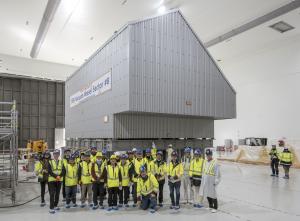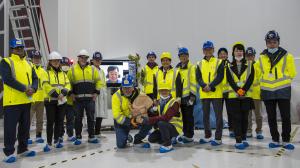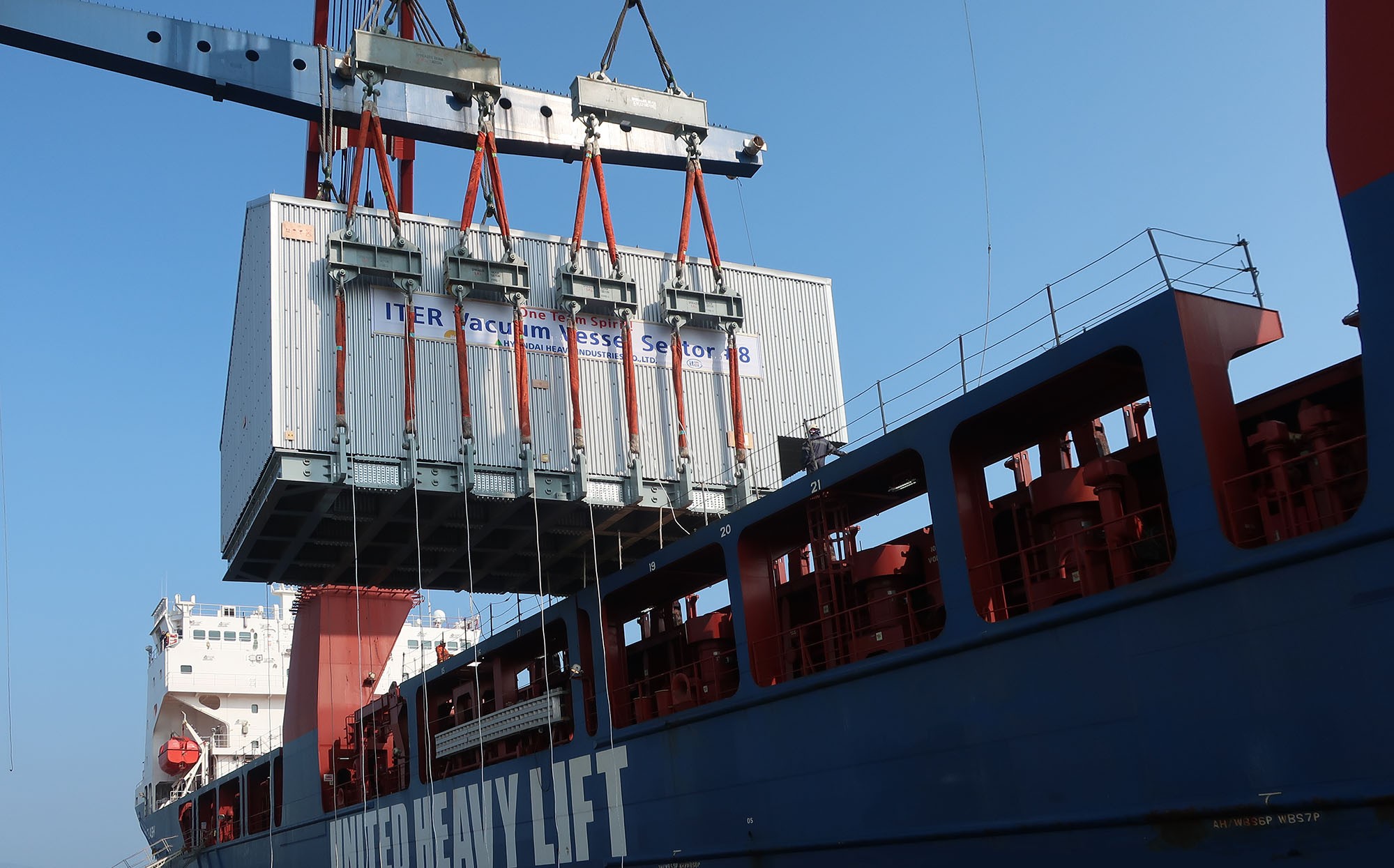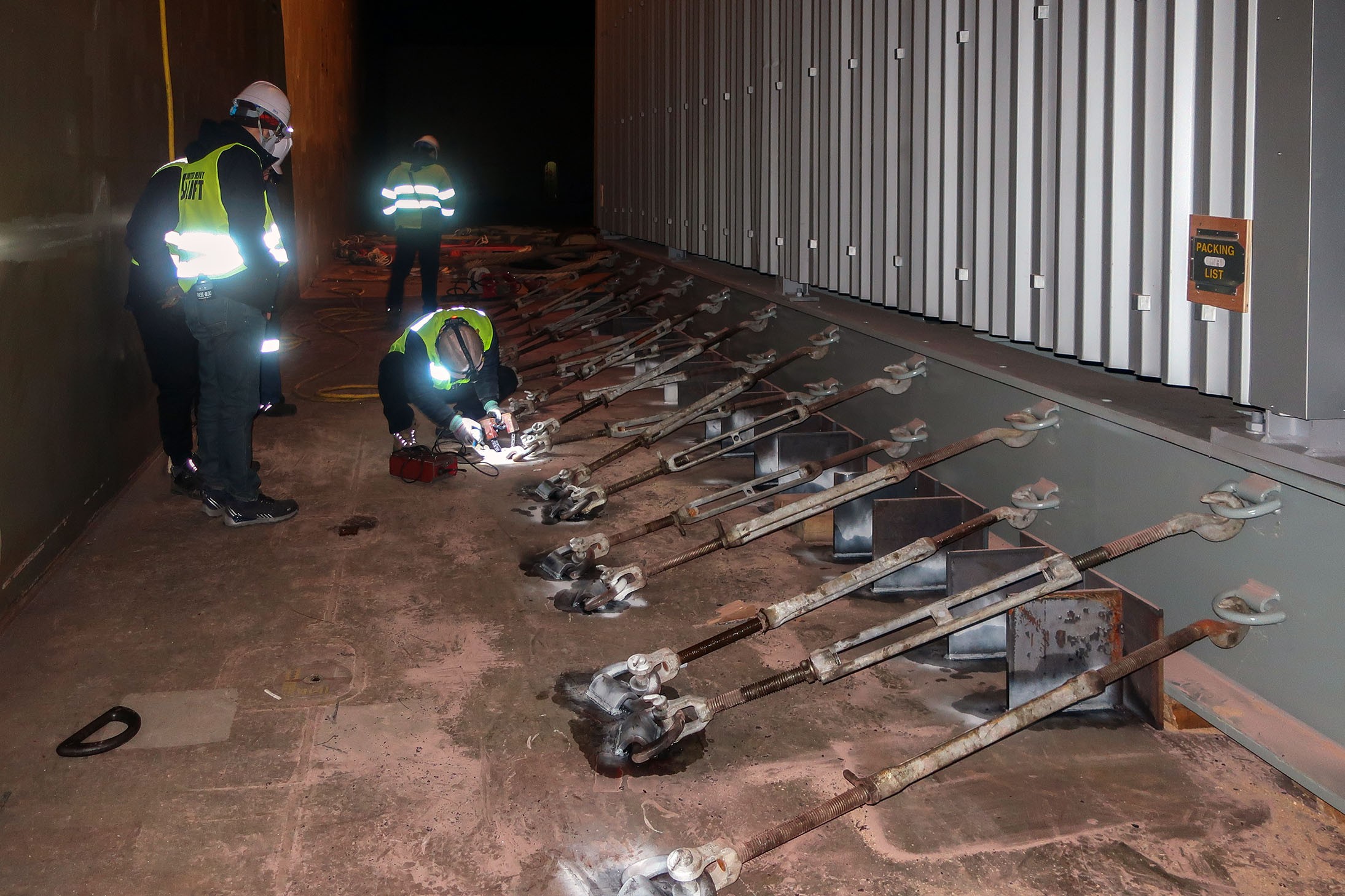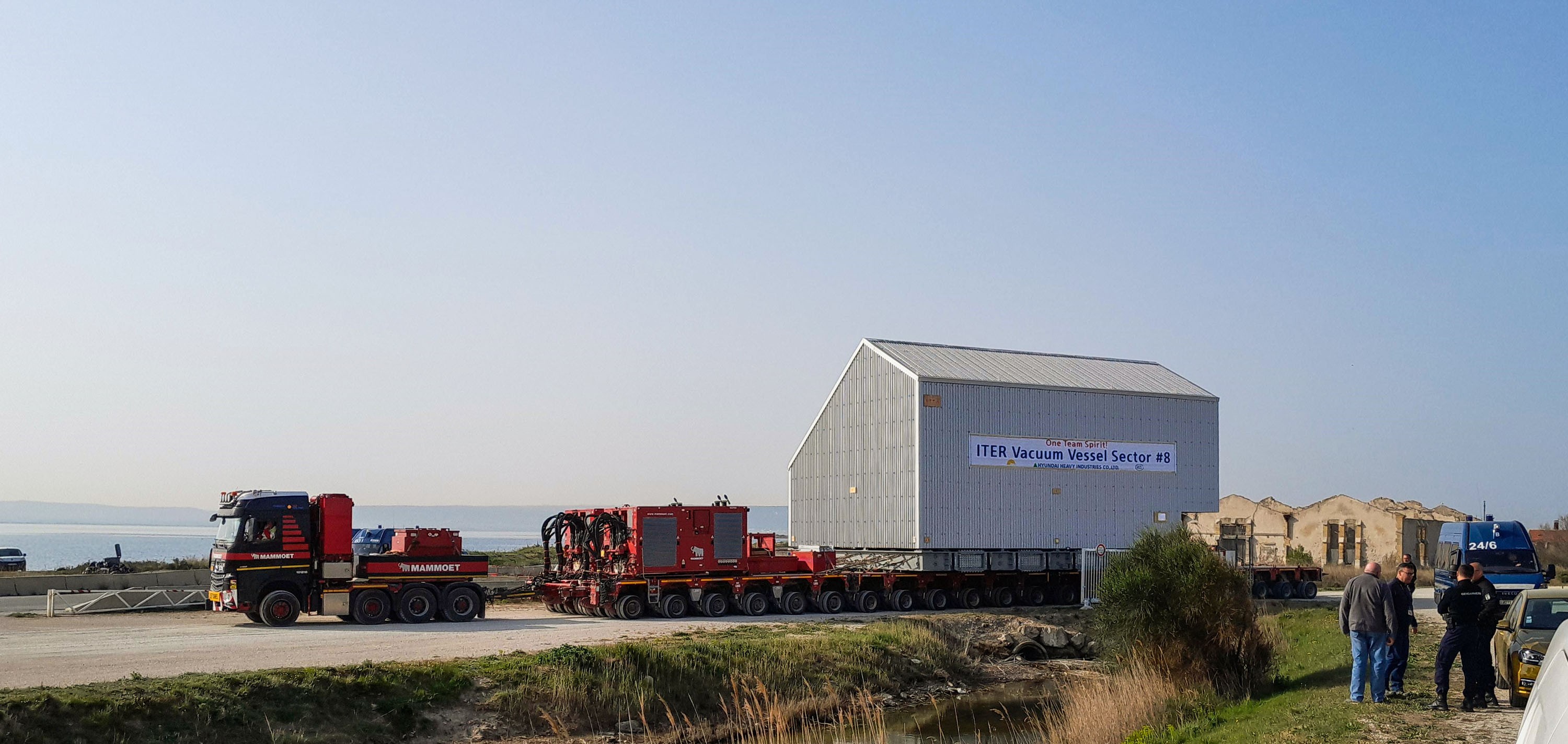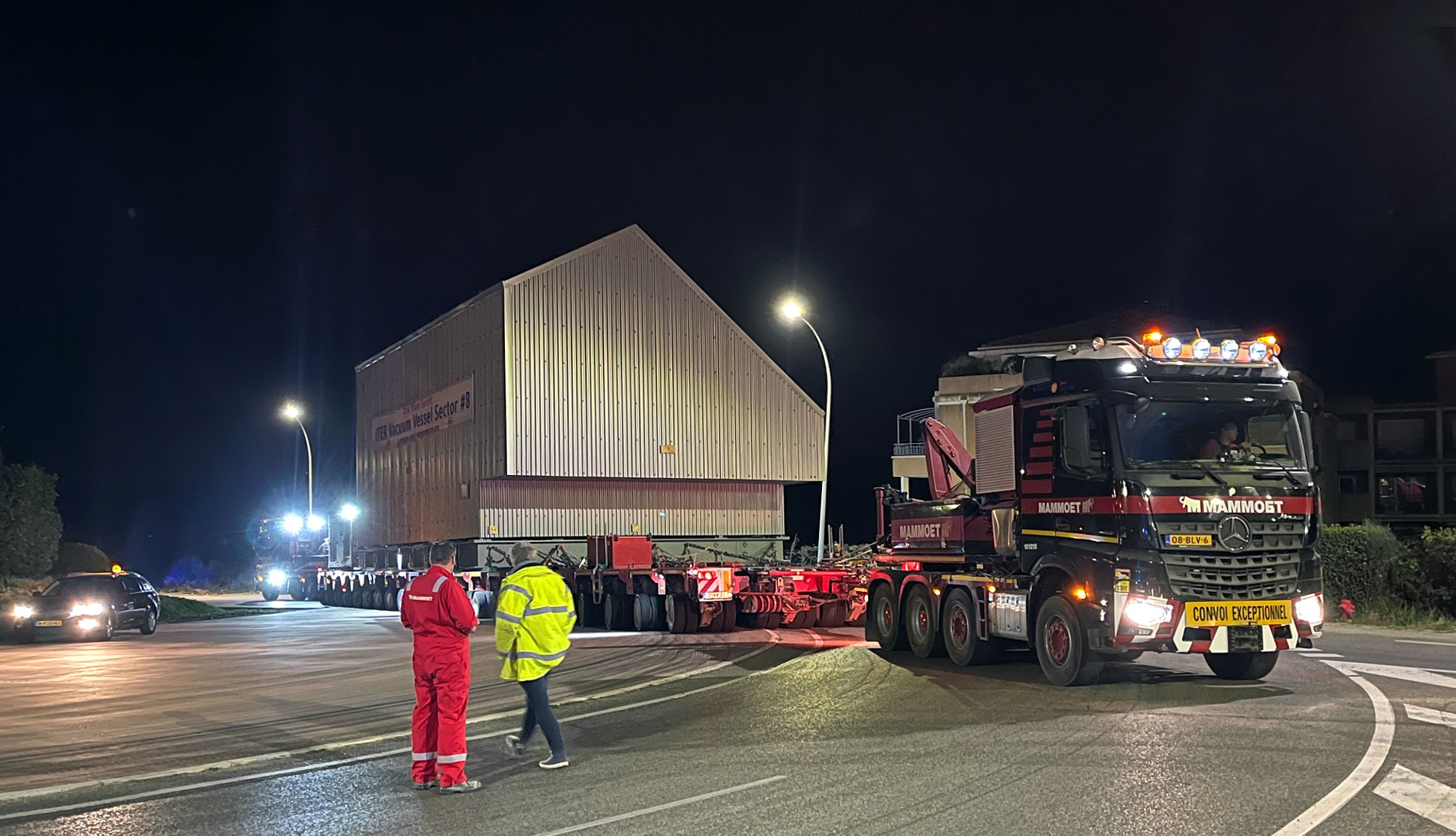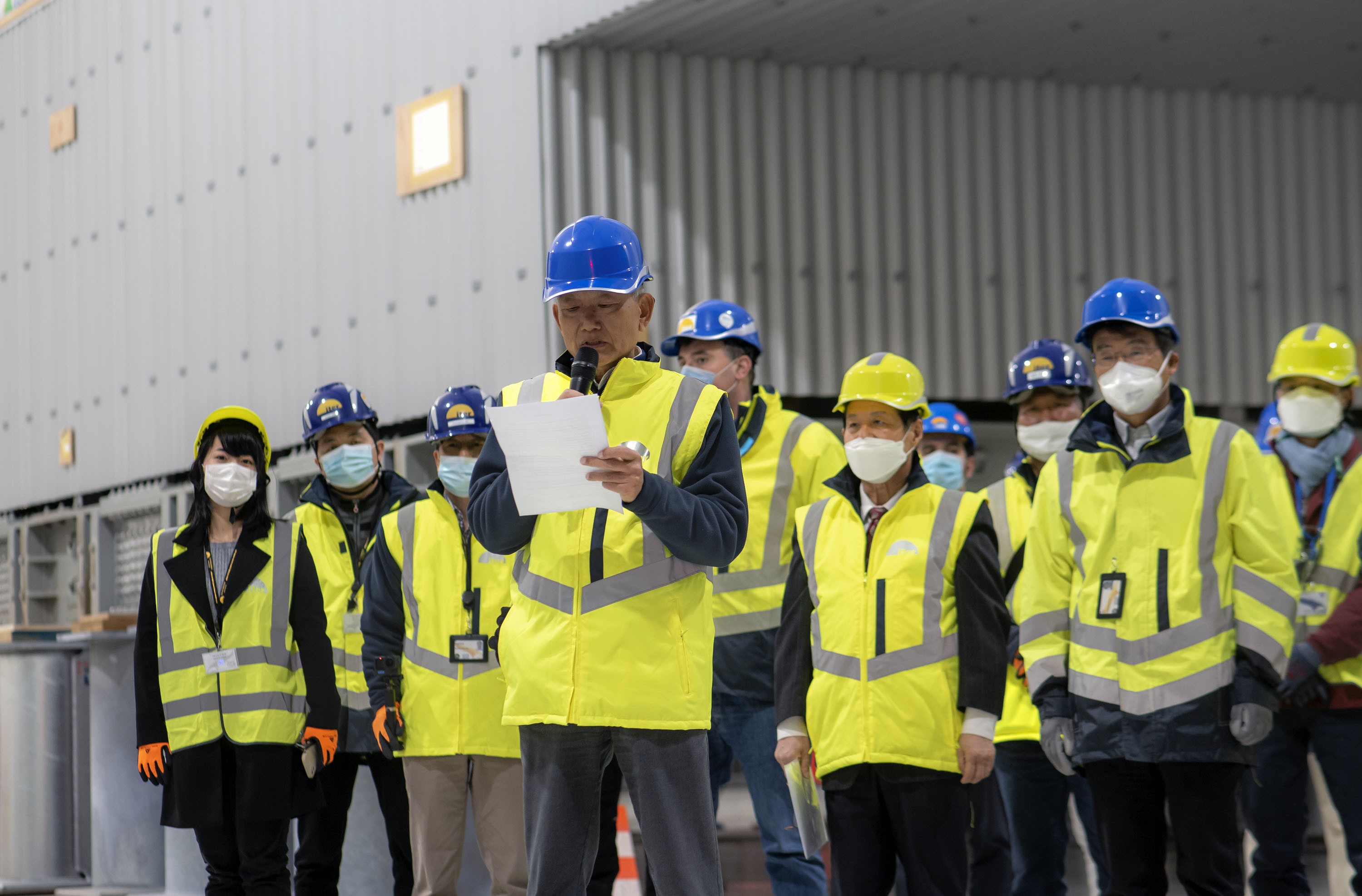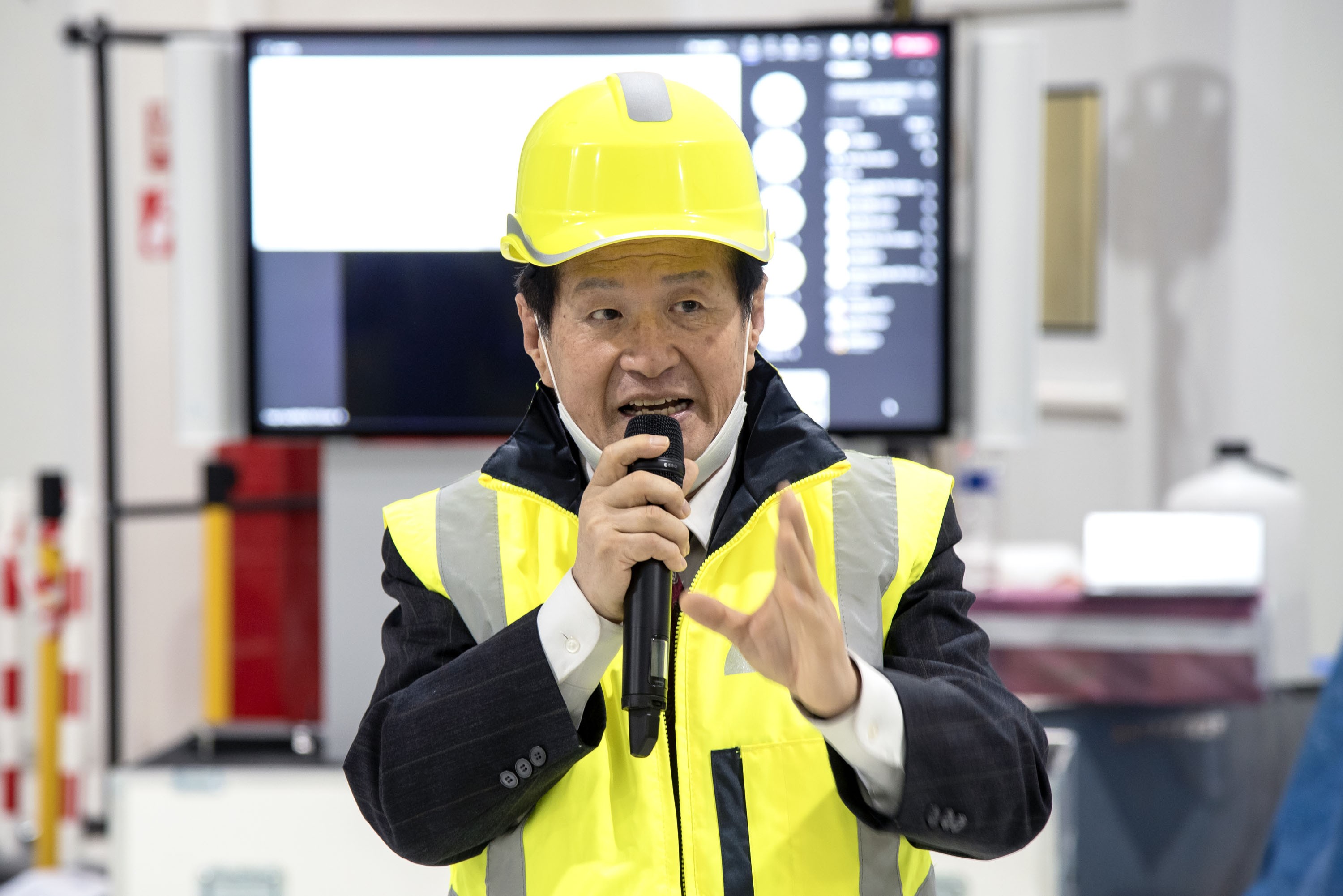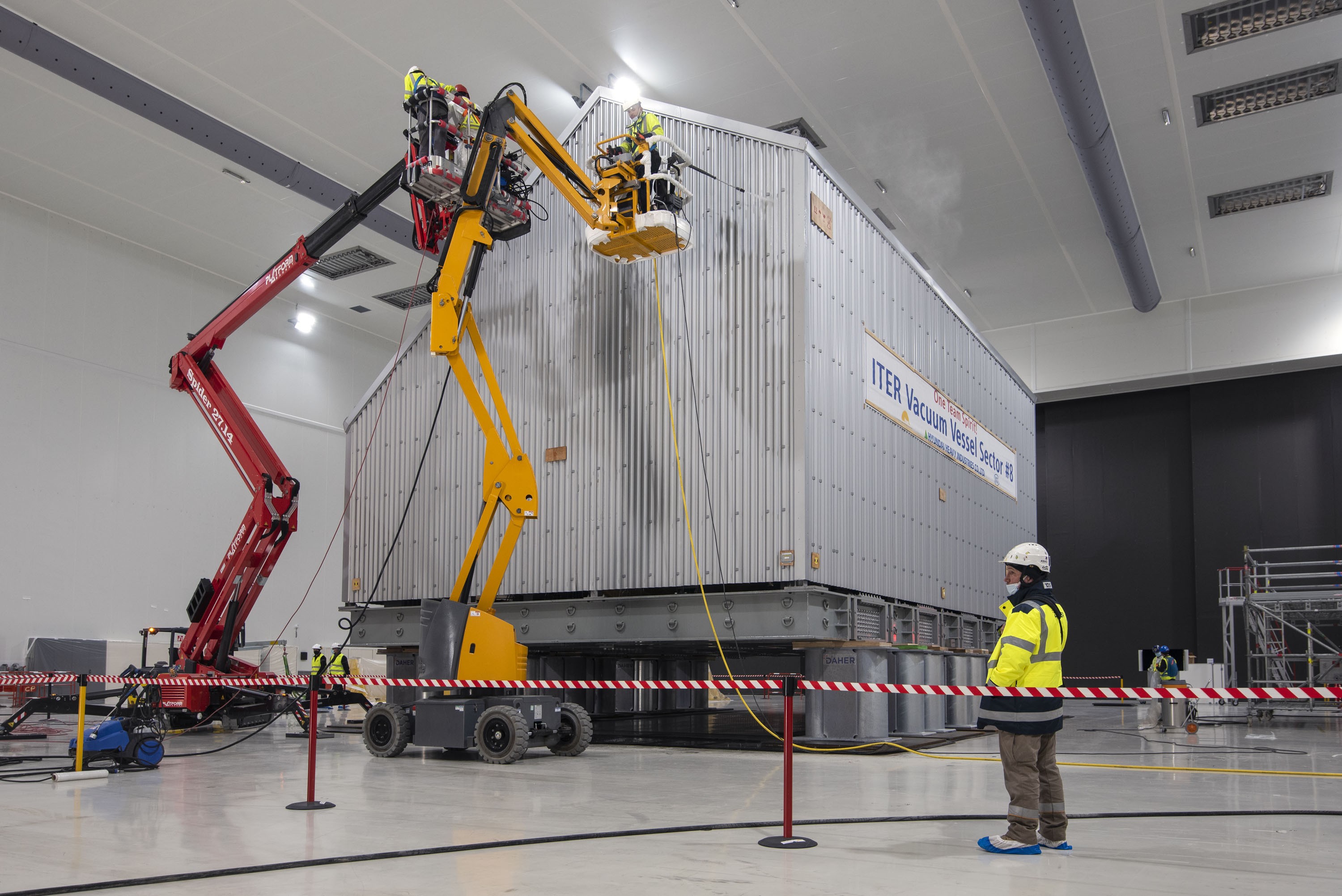Welcoming a third sector from Korea
Fusion is about harnessing Nature's most powerful energy source: the fabulous forces that are liberated when two light atoms merge into a heavier one. The challenge, which ITER is designed to overcome, is immense and the difficulties innumerable. There are however other natural forces, more familiar but no less impressive, that ITER sometimes needs to deal with. Two months ago in late January, as the third vacuum vessel sector manufactured in Korea was ready to ship, gale force winds and swelling seas on the southeastern coast of the country where the Hyundai Heavy Industry shipyard is located prevented the loading of the massive component onto the waiting ship. As time was running short and the storm showed no sign of abating, a solution had to be found fast. Thanks to an exemplary collaboration between all the actors involved, both at Ulsan harbour and at the receiving end in southern France, the 440-tonne vacuum vessel sector was loaded onto a barge and moved twenty kilometres to a protected pier, where normal ship loading operations could resume.
"The situation was really difficult," explains Kijung Jung, the Head of the Korean Domestic Agency. "As the barge transfer had not been anticipated, we first needed a green light from ITER Director-General Bernard Bigot to proceed. In the early morning of 24 January, we had a telephone conversion and the authorization to proceed was given as an emergency measure."
Preparing the barge operation, both technically and administratively, mobilized the teams for almost three full days and at 10:30 a.m. on 26 January, the high-sea vessel with vacuum vessel sector #8 safely fastened in its hold began its month-long, 12,000-kilometre journey to Marseille harbour and later to the ITER site, where it arrived safely in the early hours of Friday 1 April.
As sector #8 sat on stillage, towering above the small group gathered in the ITER Cleaning Facility to celebrate the component's delivery, pride and emotion could still be felt in Kijung Jung's voice as he narrated the details of the "fantastic emergency action" that enabled the timely delivery and thanked all those who had made it possible—especially the Korean freight forwarder Shinjo and ITER global logistics provider DAHER.
Standing as tall as a six-storey building, an ITER vacuum vessel sector is a first-of-a-kind component that combines exceptional size and extreme dimensional precision. "The manufacturing itself was much more difficult than we expected," admitted Jung.
An ITER component does not exist on its own. Beyond the expertise of its manufacturer, it is also the product of a large collaboration. "In this long process, which began in 2008 with the signature of the Procurement Arrangement, the Korean Domestic Agency has worked closely with the vacuum vessel project team here at ITER; with the European Domestic Agency that will deliver five similar sectors; with India, that provides the in-wall shielding; and with Russia, that manufactures the upper ports," said Youngeek Jung, head of the ITER Construction Domain.
There are now three vacuum vessel sectors on site. Sector #6, delivered in August 2020, has already been equipped and assembled with two toroidal field coils and corresponding thermal shield segments and is almost ready to be installed in the Tokamak assembly pit. A second Korean sector, #1(7), reached ITER in August 2021 has entered the first phases of the sub-assembly process. Sector #8 will follow the same path in a few months.
Korea is scheduled to deliver the fourth and last sector in November of this year. "We will make our best effort to ensure that the remaining items that we are manufacturing, including vacuum vessel sector #7(1), can be delivered timely and successfully," said Kyungho Park, vice-president of Hyundai Heavy Industry who joined the event through remote connection.
Although vacuum vessel sectors are now a familiar sight in the ITER Assembly Hall, their alien shape and daring mission still exert a sort of fascination: they form the chamber that will face, at a few metres distance, the heart of a star ten times hotter than the Sun.

